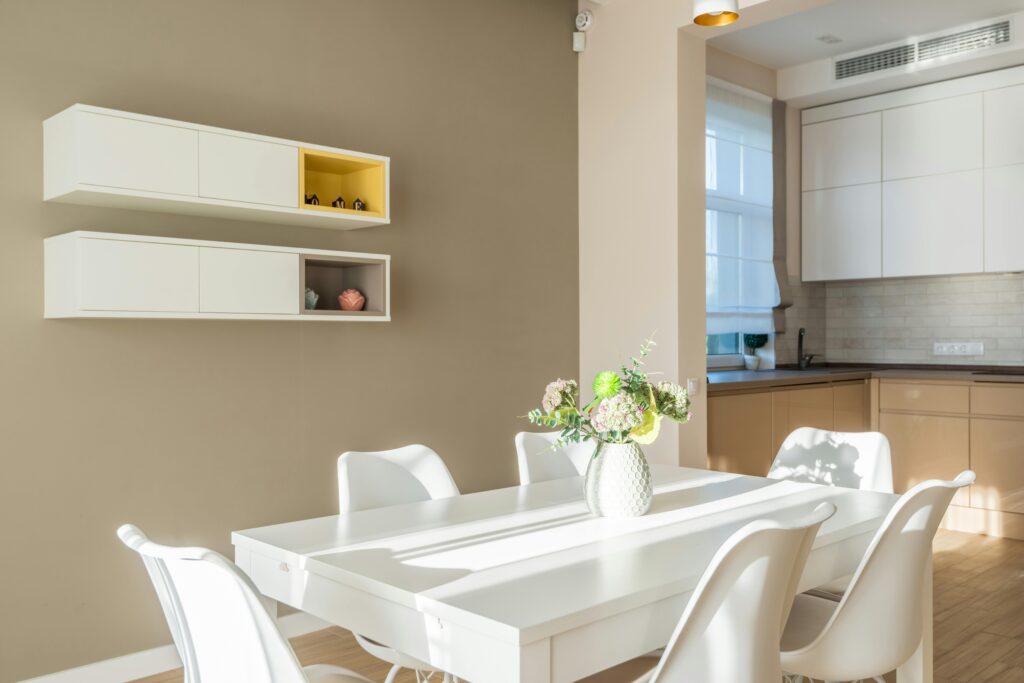Have you ever wondered why traditional dining rooms seem to be vanishing from modern homes? What’s behind the trend of replacing formal dining areas with open, multifunctional spaces? If you’re noticing fewer dining rooms in new home designs, you’re not alone. This article delves into the reasons behind the dining rooms disappearing and explores how this shift is reshaping modern living spaces.
The Evolution of Home Design
Over the past few decades, home design has undergone a significant transformation. The formal dining room, once a staple in many households, is now becoming a rarity. This change is driven by several factors, including evolving lifestyle preferences, changing family dynamics, and new architectural home trends.
Open Floor Plans: One of the primary reasons for the decline of traditional dining rooms is the rise of open floor plans. These designs combine the kitchen, dining area, and living room into one expansive space. This layout fosters a more social and interactive environment, allowing family members and guests to engage more freely.
Lifestyle Changes: In today’s fast-paced world, many people prefer informal dining solutions. The formality of a separate dining room is often replaced by casual dining areas or breakfast nooks that are more practical for everyday use. With busy schedules and a preference for convenience, people are moving away from the traditional dining experience.
Space Optimization: Space is a premium in urban areas and smaller homes. The need to maximize every square foot often leads to the elimination of dedicated dining rooms. Instead, homeowners opt for multifunctional spaces that serve multiple purposes, such as home offices or play areas.
The Role of Open Floor Plans
Open floor plans have become a hallmark of modern home design. By removing walls between the kitchen, dining, and living areas, these layouts create a seamless flow between spaces. This design approach promotes a more connected and interactive environment, where family members and guests can easily communicate and engage.
Social Interaction: One of the main benefits of open floor plans is the enhanced social interaction they offer. With fewer barriers between rooms, people can engage in conversations and activities without feeling isolated. This layout is especially popular for families who value togetherness and want to stay connected throughout the day.
Visual Space: Open floor plans also make spaces feel larger and more open. By eliminating the visual boundaries of separate rooms, these designs create a sense of spaciousness that is highly desirable, especially in smaller homes. This visual openness contributes to the overall appeal of modern living spaces.
Changing Lifestyles and Preferences
The shift away from traditional dining rooms can be attributed to changing lifestyles and preferences. Modern homeowners are increasingly seeking practicality and flexibility in their living spaces.
Casual Dining: The formality of traditional dining rooms is often at odds with contemporary lifestyles that prioritize casual and relaxed environments. Many people prefer informal dining setups, such as breakfast bars or kitchen islands, that offer convenience and ease of use.
Flexible Spaces: As lifestyles become more dynamic, there is a growing demand for flexible spaces that can adapt to various needs. Dining rooms, with their fixed purpose, may not align with the desire for multifunctional areas. Homeowners are opting for spaces that can serve multiple functions, such as home offices, exercise rooms, or play areas.
Changing Family Dynamics: Family dynamics have also evolved, leading to a decline in formal dining practices. With more people working from home and children having different schedules, the need for a dedicated dining room has diminished. Instead, families are choosing spaces that accommodate their current lifestyle.
Space Optimization in Urban Areas
In urban areas, where space is often limited, maximizing every square foot becomes essential. The traditional dining room, which requires a dedicated area, may not be practical in smaller homes or apartments.
Multifunctional Spaces: To make the most of limited space, homeowners are increasingly opting for multifunctional areas. For example, a single room might serve as both a dining area and a home office, or a kitchen island might double as a dining space. These solutions allow homeowners to use their space more efficiently and effectively.
Creative Solutions: Designers and architects are also finding creative ways to incorporate dining elements into open spaces. For instance, built-in seating or extendable tables can be integrated into living areas, providing flexibility while maintaining the functionality of a dining space.
The Future of Dining Rooms
While dining rooms are disappearing from many modern homes, this doesn’t necessarily mean they are gone forever. The future of dining rooms may involve a blend of traditional and contemporary elements, adapting to changing lifestyles and design preferences.
Hybrid Spaces: One potential future trend is the development of hybrid spaces that combine the best aspects of both traditional and modern designs. For example, a dining area could be incorporated into a larger open space but designed with flexible features that allow it to be used in various ways.
Customization: Homeowners may also have more options for customizing their living spaces to fit their unique needs. This could include the ability to design a dining area that seamlessly integrates with the rest of the home while still providing the formality and functionality desired.
Sustainable Design: As sustainability becomes increasingly important, future dining rooms may incorporate eco-friendly materials and designs. This could include using reclaimed materials or designing spaces that reduce waste and energy consumption.
CONCLUSION:
The traditional dining rooms disappearing! No its evolving!. As home design adapts to changing needs and preferences, dining spaces are transforming into open floor plans, multifunctional areas, and innovative designs that still prioritize the importance of dining together. Embracing these changes and staying open to new ideas allows homeowners to create spaces that meet their unique needs, enhancing their living experience and reflecting their lifestyle.







